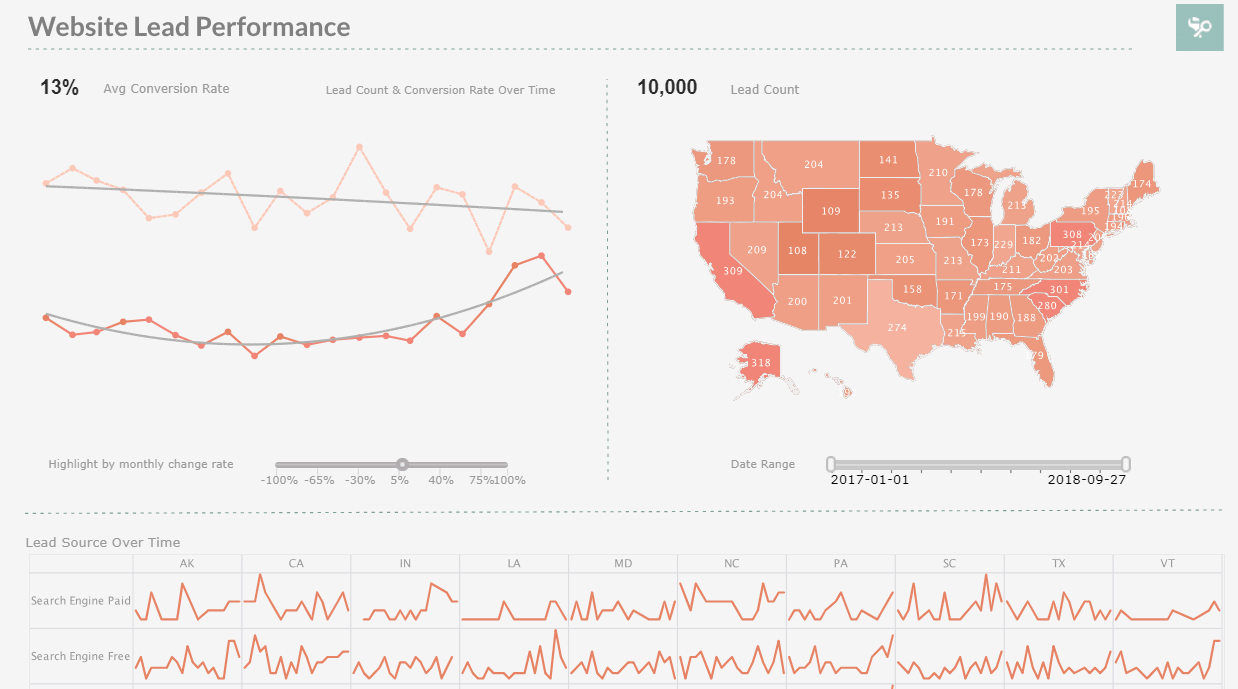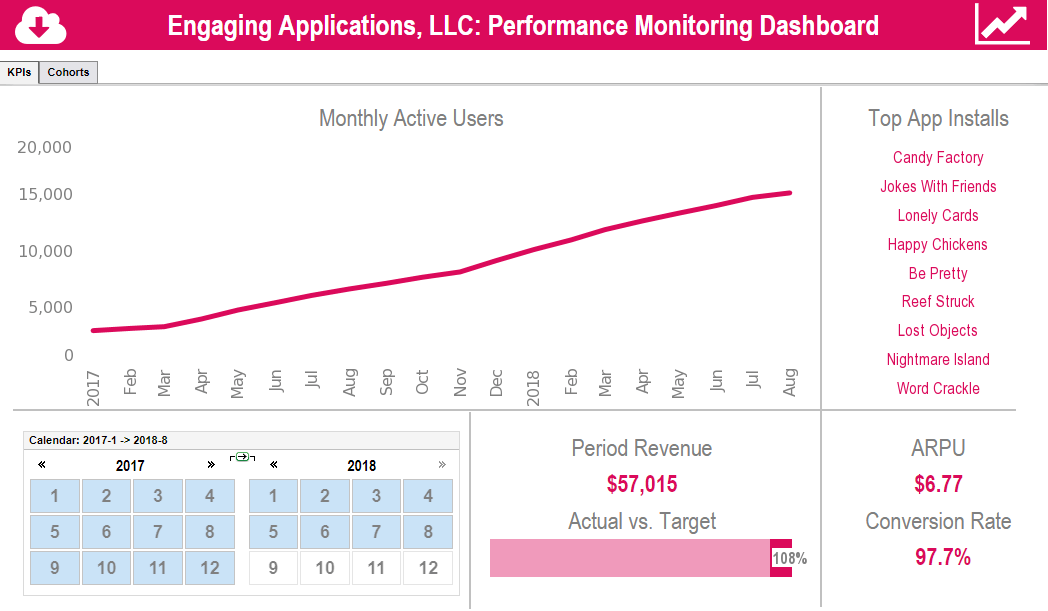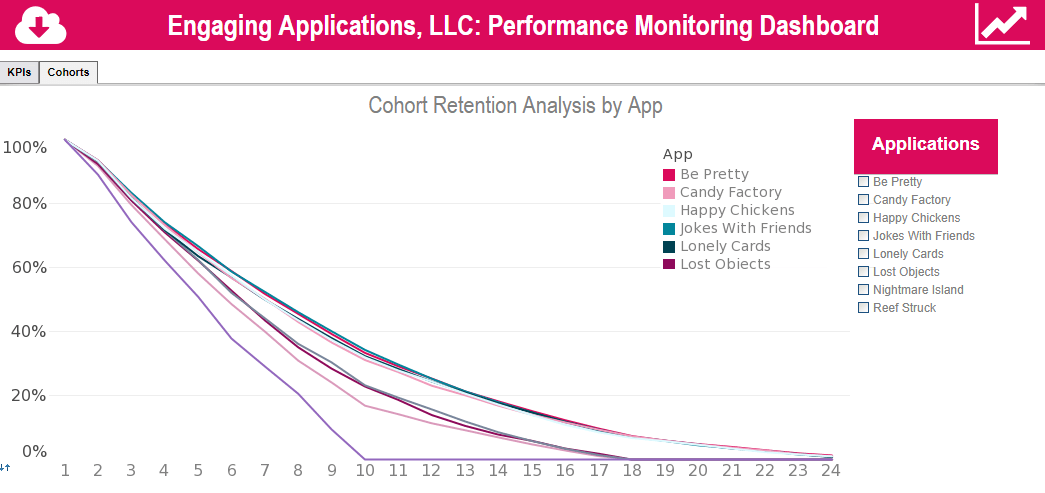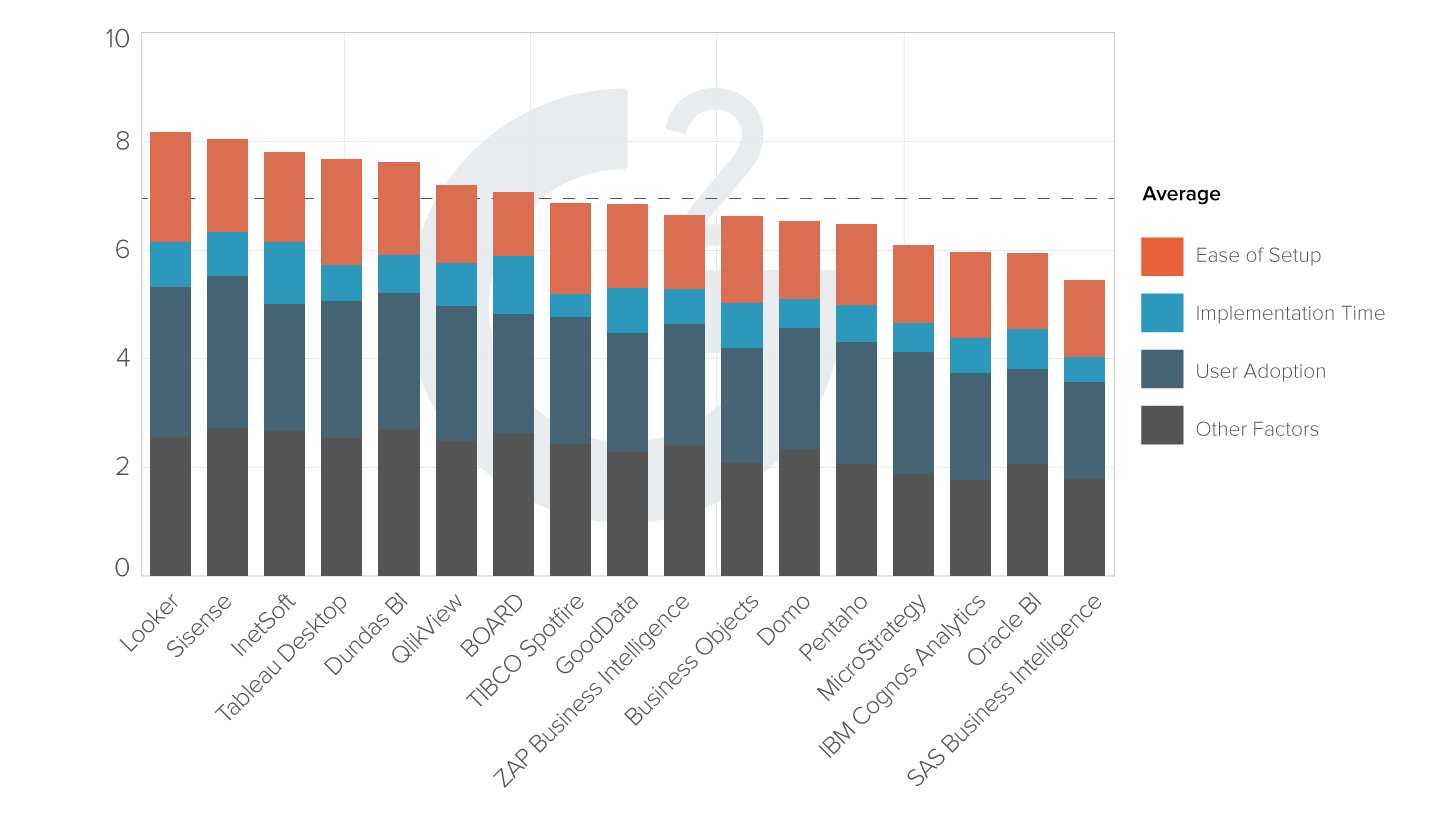Dashboards for Microsoft Access by InetSoft
Are you looking for business intelligence dashboards for use with Microsoft Access and other similar data sources? InetSoft offers award winning dashboard solutions. View a demo and try interactive examples.



Register for more information and a personalized demo
About InetSoft
Since 1996 InetSoft has been delivering easy, agile, and robust business intelligence software that makes it possible for organizations and solution providers of all sizes to deploy or embed full-featured business intelligence solutions. Application highlights include visually-compelling and interactive dashboards that ensure greater end-user adoption plus pixel-perfect report generation, scheduling, and bursting. InetSoft's patent pending Data Block™ technology enables productive reuse of queries and a unique capability for end-user defined data mashup.
This capability combined with efficient information access enabled by InetSoft's visual analysis technologies allows maximum self-service that benefits the average business user, the IT administrator, and the developer. InetSoft was rated #1 in Butler Analytics Business Analytics Yearbook, and InetSoft's BI solutions have been deployed at over 5,000 organizations worldwide, including 25% of Fortune 500 companies, spanning all types of industries.
What KPIs and Metrics Do Biomedical Engineering Companies Track with Dashboards?
Biomedical engineering companies track various Key Performance Indicators (KPIs) and metrics through dashboards to monitor performance, ensure compliance, and drive innovation. Here are some essential KPIs and their definitions, along with their significance in performance management:
- Research and Development (R&D) Efficiency
- Definition: Measures the ratio of successful projects to total R&D projects undertaken.
- Significance: Indicates the effectiveness of the R&D department in generating viable products, crucial for innovation and competitiveness.
- Product Development Cycle Time
- Definition: The average time taken from concept initiation to product launch.
- Significance: Shorter cycle times can lead to faster time-to-market, providing a competitive edge and quicker returns on investment.
- Regulatory Compliance Rate
- Definition: Percentage of products and processes that meet regulatory requirements.
- Significance: Ensures adherence to safety standards and legal requirements, reducing the risk of fines and enhancing market trust.
- Quality Assurance Metrics
- Definition: Includes metrics like defect rates, mean time between failures (MTBF), and mean time to repair (MTTR).
- Significance: Ensures product reliability and customer satisfaction, directly impacting brand reputation and customer loyalty.
- Clinical Trial Success Rate
- Definition: The proportion of clinical trials that meet their primary endpoints.
- Significance: Reflects the effectiveness of the development process and the potential for bringing new treatments to market.
- Cost of Goods Sold (COGS)
- Definition: The direct costs attributable to the production of the goods sold.
- Significance: Helps in pricing strategy and profitability analysis, essential for financial health.
- Customer Satisfaction and Feedback
- Definition: Measures customer satisfaction levels through surveys, Net Promoter Score (NPS), and feedback mechanisms.
- Significance: Directly impacts product improvements, customer loyalty, and market share.
- Supply Chain Efficiency
- Definition: Metrics like inventory turnover rate, supplier lead time, and order fulfillment rate.
- Significance: Ensures smooth operations, cost control, and timely delivery of products.
- Revenue Growth Rate
- Definition: The rate at which a company's revenue is increasing over a specified period.
- Significance: Indicates overall business health and market acceptance of products.
- Gross Margin
- Definition: The difference between revenue and cost of goods sold, expressed as a percentage of revenue.
- Significance: Reflects the efficiency in production and pricing strategy, crucial for profitability.
- Return on Investment (ROI)
- Definition: A measure of the profitability of investments in R&D, marketing, and infrastructure.
- Significance: Guides strategic decisions on where to allocate resources for maximum returns.
- Employee Productivity
- Definition: Metrics such as revenue per employee and the number of patents filed per researcher.
- Significance: Indicates workforce efficiency and innovation capability, essential for sustainable growth.
- Market Share
- Definition: The company's sales as a percentage of the total sales in the industry.
- Significance: Reflects the company's competitiveness and success in capturing market demand.
- Patent Portfolio Strength
- Definition: Number of patents filed, granted, and maintained.
- Significance: Demonstrates innovation and protects intellectual property, providing a competitive edge.
- Environmental Impact Metrics
- Definition: Measures such as carbon footprint, waste reduction, and energy consumption.
- Significance: Ensures sustainable practices and compliance with environmental regulations, enhancing corporate responsibility.
- Operational Efficiency
- Definition: Includes metrics like cycle time, throughput rate, and capacity utilization.
- Significance: Enhances productivity and reduces costs, crucial for maintaining profitability.
- Customer Acquisition Cost (CAC)
- Definition: The total cost of acquiring a new customer.
- Significance: Helps in evaluating marketing effectiveness and guiding budget allocation.
- Churn Rate
- Definition: The percentage of customers who stop using the company's products or services over a given period.
- Significance: Indicates customer retention levels and the need for improvement in product or service quality.
- Innovation Rate
- Definition: The percentage of revenue generated from new products or services introduced within a specific timeframe.
- Significance: Reflects the company's ability to innovate and meet market demands.
- Operational Risk Metrics
- Definition: Includes risk incidents, compliance breaches, and corrective action effectiveness.
- Significance: Helps in identifying and mitigating risks, ensuring smooth and compliant operations.
How Is Artificial Intelligence Used by Biomedical Engineering Companies?
Artificial Intelligence (AI) is increasingly being integrated into biomedical engineering, revolutionizing various aspects of the field. Here are several key ways AI is used by biomedical engineering companies:
1. Medical Imaging and Diagnostics
AI Algorithms for Image Analysis:
- Definition: AI-powered tools analyze medical images such as MRIs, CT scans, and X-rays.
- Significance: These algorithms can detect anomalies and diagnose diseases with high accuracy, often outperforming human radiologists in speed and precision.
Predictive Diagnostics:
- Definition: Machine learning models predict disease progression and outcomes based on imaging data.
- Significance: Early detection and timely intervention can improve patient outcomes and reduce healthcare costs.
2. Personalized Medicine
Genomic Data Analysis:
- Definition: AI analyzes genomic sequences to identify mutations and their implications.
- Significance: Enables personalized treatment plans tailored to an individual's genetic makeup, enhancing the effectiveness of therapies.
Drug Development:
- Definition: AI models predict how different patients will respond to various drugs.
- Significance: Streamlines the drug discovery process and helps in developing targeted therapies, reducing trial and error in treatment.
3. Biomedical Devices
Smart Prosthetics and Implants:
- Definition: AI-driven prosthetics and implants adapt to the user's movements and provide feedback.
- Significance: Improves the functionality and user experience of prosthetic limbs and medical implants, enhancing the quality of life for patients.
Wearable Health Monitors:
- Definition: AI-powered wearable devices monitor vital signs and health metrics in real-time.
- Significance: Provides continuous health monitoring, allowing for early detection of potential health issues and timely medical intervention.
4. Robotics in Surgery
Robotic Surgical Systems:
- Definition: AI-assisted robotic systems enhance the precision and control of surgical instruments.
- Significance: Minimizes human error, reduces recovery time, and improves surgical outcomes.
Automated Surgery Planning:
- Definition: AI algorithms develop detailed surgical plans based on patient data.
- Significance: Enhances the efficiency and accuracy of surgical procedures by providing surgeons with optimal strategies.
5. Predictive Maintenance of Biomedical Equipment
Equipment Failure Prediction:
- Definition: AI models predict potential equipment failures and maintenance needs.
- Significance: Prevents unexpected downtime and extends the lifespan of medical equipment, ensuring continuous and reliable operation.
6. Clinical Decision Support Systems (CDSS)
AI-Powered Decision Support:
- Definition: AI systems assist healthcare professionals by providing evidence-based recommendations.
- Significance: Enhances clinical decision-making, reduces diagnostic errors, and improves patient care.
7. Drug Discovery and Development
Molecular Modeling and Simulation:
- Definition: AI simulates molecular interactions to identify potential drug candidates.
- Significance: Accelerates the drug discovery process and reduces the cost of developing new medications.
Clinical Trial Optimization:
- Definition: AI models optimize patient selection and trial design.
- Significance: Increases the efficiency and success rate of clinical trials, bringing effective drugs to market faster.
8. Patient Monitoring and Care
Remote Patient Monitoring:
- Definition: AI systems analyze data from remote monitoring devices.
- Significance: Enables continuous care for patients with chronic conditions, reducing hospital visits and improving quality of life.
Virtual Health Assistants:
- Definition: AI-driven chatbots and virtual assistants provide health advice and support.
- Significance: Enhances patient engagement and accessibility to healthcare information.
9. Rehabilitation Engineering
Adaptive Rehabilitation Systems:
- Definition: AI-powered systems tailor rehabilitation exercises to individual patient needs.
- Significance: Improves the effectiveness of rehabilitation programs and accelerates patient recovery.
Robotic Rehabilitation Devices:
- Definition: AI-driven robots assist in physical therapy exercises.
- Significance: Provides precise and consistent support, enhancing the rehabilitation process.
10. Health Data Management
Big Data Analytics:
- Definition: AI analyzes vast amounts of health data to identify trends and insights.
- Significance: Improves healthcare decision-making, policy development, and research by uncovering valuable patterns in data.
Electronic Health Records (EHR) Optimization:
- Definition: AI enhances the management and analysis of EHRs.
- Significance: Streamlines administrative tasks, reduces errors, and improves the efficiency of healthcare delivery.
More Resources and Articles about InetSoft's Access Dashboard Solution
Cruise Ship Company Dashboards - Cruise ship companies utilize dashboards to track a variety of key performance indicators (KPIs) and metrics to monitor and optimize their operations, enhance guest experience, ensure safety and compliance, and drive financial performance. Here are some common KPIs and metrics that cruise ship companies may track on their dashboards...
Flexible Report Distribution Software - Regular reports are vital for the monitoring and control of business conditions. But in many cases, the production of daily, weekly, monthly, and annual reports puts additional demands on administrators and employees. And with so much business travel and work done out in the field, report accessibly and deliverability can also be an issue. Our solution, Style Report, makes the setting up and delivery of weekly reports easy and efficient. Pricing is lower than big name software providers, and all new customers get mentoring assistance for free to speed up their project delivery...
Food Quality Control Standards Analytics - Analytics and Big data are incredibly important when it comes to your food quality control. When you have products that are temperature-sensitive like milk, fruit, and more obviously ice cream you have to have a perfect environment to transport and store them so they don't get damaged. The procedures are varied depending on the product, the shelf life of bananas, and that of wine are a good example. Using analytics you can know exactly the time you have to replace a product or take any preemptive measures so that the waste is greatly reduced. Doing so will both save you time and money, not to mention the protection your brand will have against any negative responses from customers which can have a huge impact...
Taking Them Weeks to Deliver - This was taking them weeks to deliver that information and by the time they get it done, the requirements have changed, so what they have done is obsolete. Now the requirements comes in, and they use their data virtualization layer to actually immediately create a virtual view for every client that comes in, and they use that now to do a rapid prototyping with that client...


